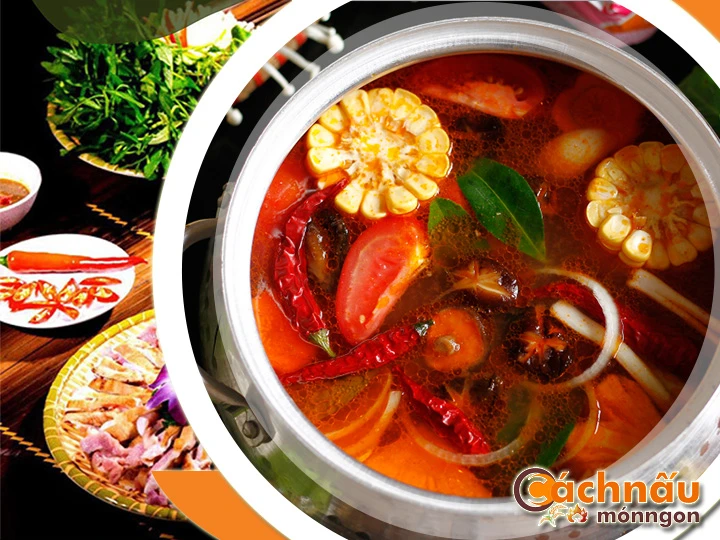Master the Traditional Rabbit Hot Pot Tips You Must Try - Lẩu thỏ
Master the Traditional Rabbit Hot Pot Tips You Must Try - Lẩu thỏ
Blog Article
Hot pot rabbit, a scrumptious and gastronomic treasure, has been revered across different food cultures for centuries.

This comprehensive guide explores every part you need to recognize about rabbit hot pot, from its historical background to current adaptations, health advantages, and cooking directions for creating the flawless recipe at home. Whether you are a veteran chef or a novice cook, this guide will empower and educate you to perfect the skill of rabbit hot pot.
UNDERSTANDING THE STORY ALONG WITH CULTURAL ASPECTS REGARDING {BRAISED RABBIT DISH|HEARTY RABBIT MEAL|RABBIT HOT POT|RABBIT STEW|BUNNY CASSEROLE|RABBIT CUISINE|STEWED RABBIT
Rabbit hot pot is a one-of-a-kind and time-honored dish with significant traditions in many areas. Its demand stems not only from its savory flavor but also from its legacy and traditions.
Rabbit hot pot stands as a distinctive and historical dish with significant traditions in many areas. Its demand stems not only from its flavorful flavor but also from its historical and cultural significance.
- Historical Beginnings: Rabbit hot pot began in villages where these animals were a prevalent, wholesome food source. In early Chinese history, it was a loved recipe, particularly during special occasions.
- Expansion Across Areas: In Western regions like France, rabbit was traditionally used in stews, adapting into modern versions of braised dishes as the dish spread across cultures.
2. Hearty Rabbit Meal throughout Asian Traditions.
- Throughout China: Known as Sichuan's rabbit hot pot delicacy, rabbit hot pot is widely known in Sichuan-style cooking, renowned for its spicy flavors and frequently prepared for intimate family events.
- Throughout Korea and Japan: While less prevalent, rabbit hot pot is rarely created as a medicinal dish in South Korea, or incorporating elements of Japan’s nabemono-style cooking in traditional Japanese cooking, including local produce and flavors.
- Vietnam: Although rabbit hot pot is not widely consumed daily, it is famous during important celebrations or in countryside where rabbit meat is abundant. It is often made using distinctive spices such as aromatic lemongrass, ginger, and hot chili, paired with fresh vegetables like kangkong, spicy greens, or neptunia leaves. This dish is favored for its special aroma and dietary value, frequently served at social meals.
Tại đất nước Việt Nam, tuy không đúng là món ăn phổ thông ngày qua ngày, nhưng được yêu thích trong những dịp đáng nhớ hoặc ở những vùng nông thôn, nơi thịt thỏ dễ dàng tìm thấy. Thường được chế biến với các loại gia vị như sả, vị cay từ gừng, và ớt cay, kết hợp với những loại rau như cải bẹ xanh. Món ăn này rất phổ biến nhờ mùi vị khác lạ và lợi ích sức khỏe, thường được dùng trong các buổi gặp gỡ bạn bè.
3. Hearty Rabbit Meal embedded in Culinary Practices of Europe.
- In France: Frequently enjoyed as a robust stew with wine reduction, aromatic herbs including rosemary, and root vegetables. Rabbit hot pot is a traditional recipe for family reunions.
- Throughout Italy: The dish known as “Cacciatore”, featuring rabbit prepared with a tomato and wine base, is a early version of modern rabbit hot pots.
HOW TO COOK RABBIT HOT POT: RECIPES AND TECHNIQUES
Rabbit hot pot is a versatile dish that combines seasonal ingredients, aromatic broths, and distinct techniques to create a filling and delicious feast. Below are key steps into the key recipes and strategies to master rabbit hot pot.
Essential Recipe for Rabbit Hot Pot
* Ingredients:
- 1 whole rabbit (chopped into parts)
- 4 cups of broth (chicken)
- Vegetables (bok choy)
- Spices and herbs (ginger)
- Seasonings (salt)
- Optional: rice for serving
* Cooking Instructions:
- Getting the Rabbit Ready: Wash and cut the rabbit into pieces. Marinate with salt, pepper, and a splash of soy sauce for 30 minutes to enrich the flavor.
- Make the Broth: Heat a vessel with a small amount of oil. Sauté garlic and sliced ginger until aromatic. Add your choice of broth and bring it to a simmer.
- Simmer the Rabbit: Add the rabbit pieces into the pot and let them simmer on gentle heat for 30-40 minutes until tender.
- Incorporate Vegetables: Add your selected vegetables and cook until they are tender but still fresh-looking.
- Present: Transfer the hot pot to a serving dish. Serve with side dishes and add-ons such as rice or noodles.
Key Techniques for Cooking Rabbit Hot Pot
- Seasoning:
. Marinate the rabbit with a mixture of salt, pepper, and aromatics to intensify its natural flavor.
. For more complexity, use wine or a mix of fresh herbs like rosemary and thyme.
- Layering Ingredients:
. Start by simmering the rabbit in the broth to release its rich flavor.
. Gradually add vegetables based on their texture needs.
- Perfect Timing:
. Avoid overcooking the rabbit, as it can become tough.
. Test for doneness by checking if the meat is fork-tender.
- Flavor Enhancements:
. Perfect the flavor by adding additional seasonings as needed.
. Experiment with different flavor profiles, such as herbal-infused variations.
Tips for Success
- Quality Matters: Always choose fresh rabbit meat and farm-fresh produce for the best results.
- Balance Flavors: Be aware of the spiciness in the broth. Try and tweak frequently during cooking.
- Creative Accompaniments: Offer a range of sauces like garlic-chili oil or savory soy mixes to enrich the dining experience.
- Serving Style: Use a portable stove or serve the hot pot at the center of the table to encourage communal dining.
By lẩu thỏ đặc biệt mastering these recipes and techniques, you can create a rabbit hot pot that’s tasty and beautifully presented, turning it into a standout dish for any gathering or occasion.
Report this page
